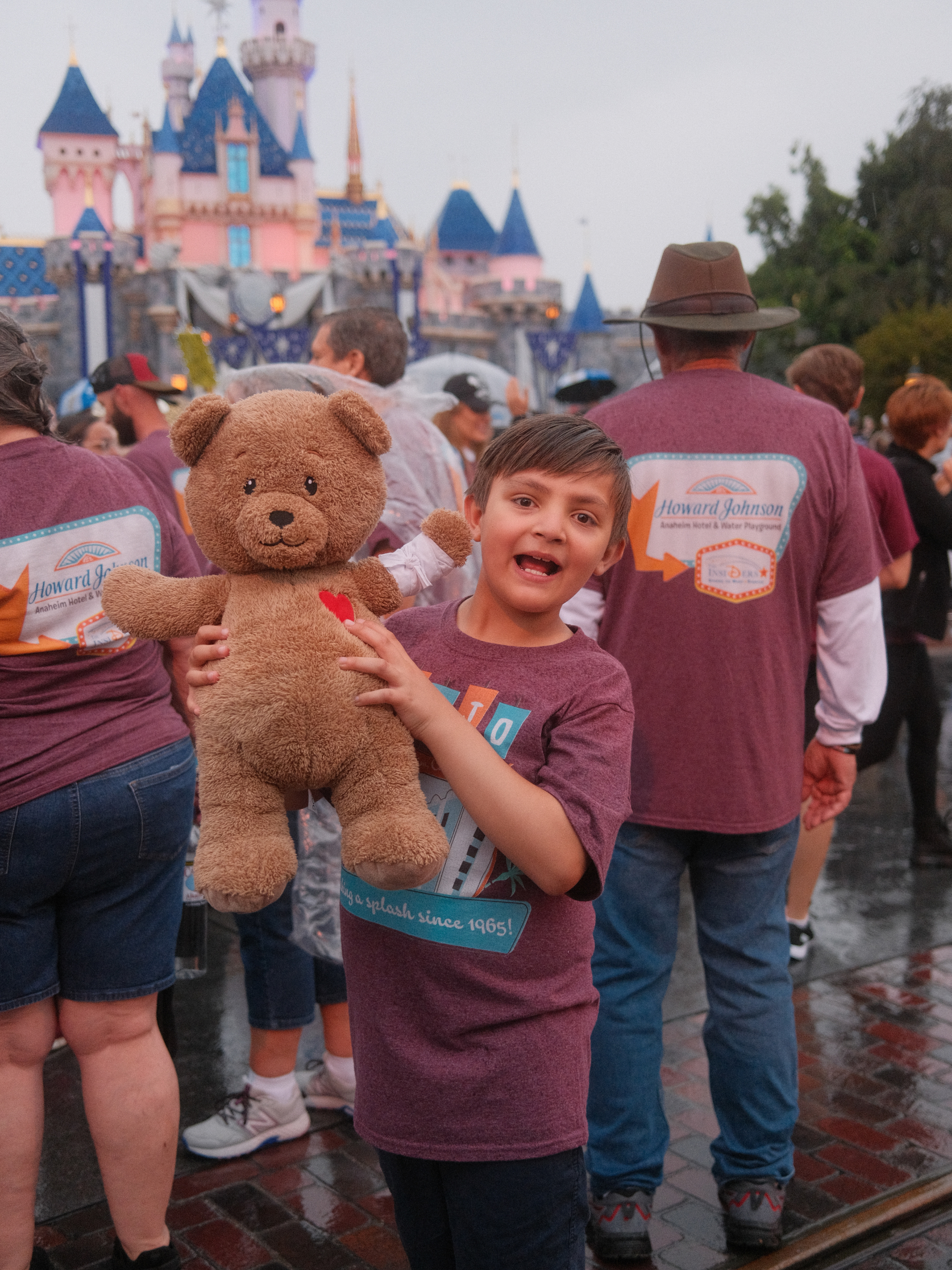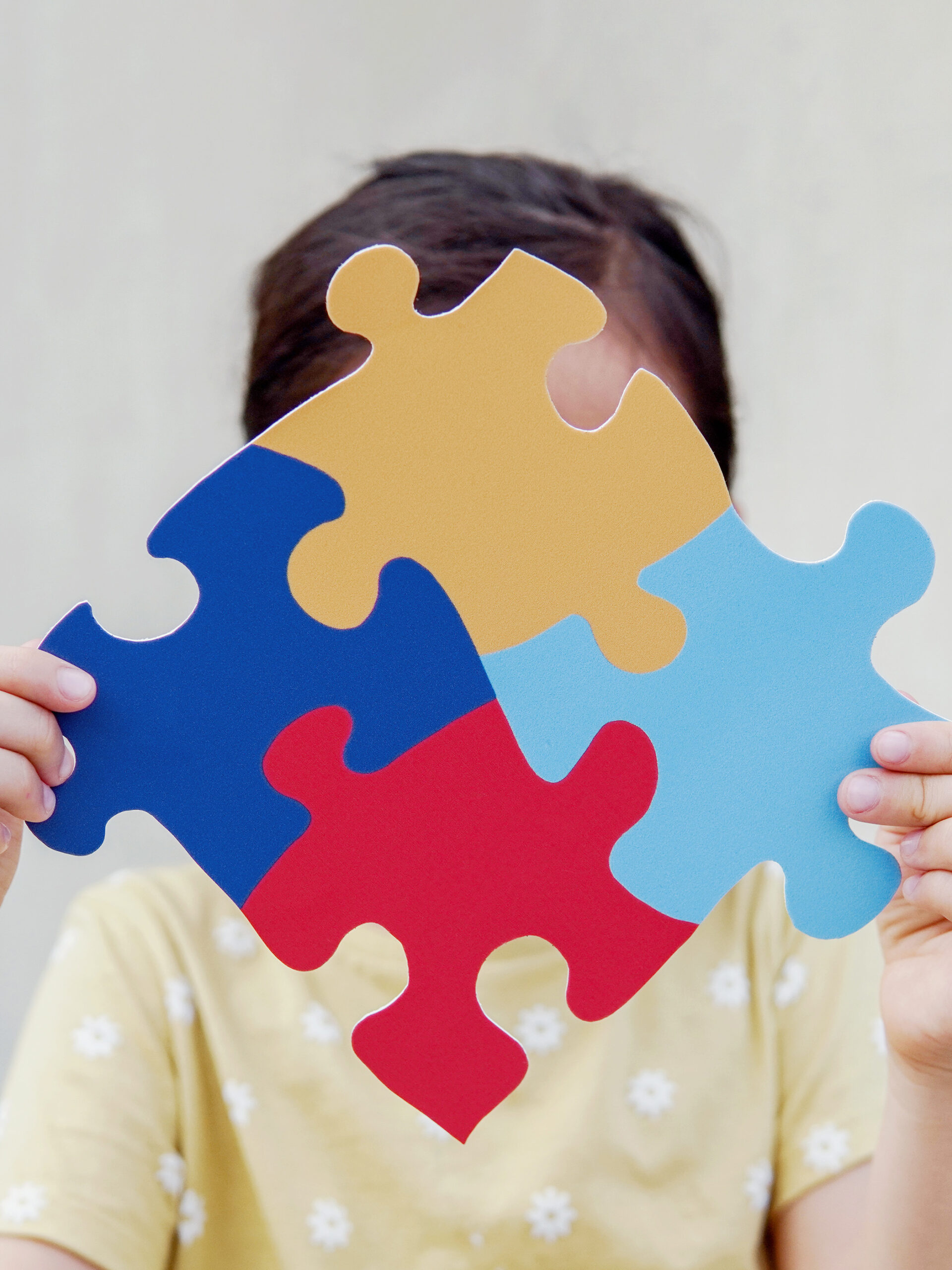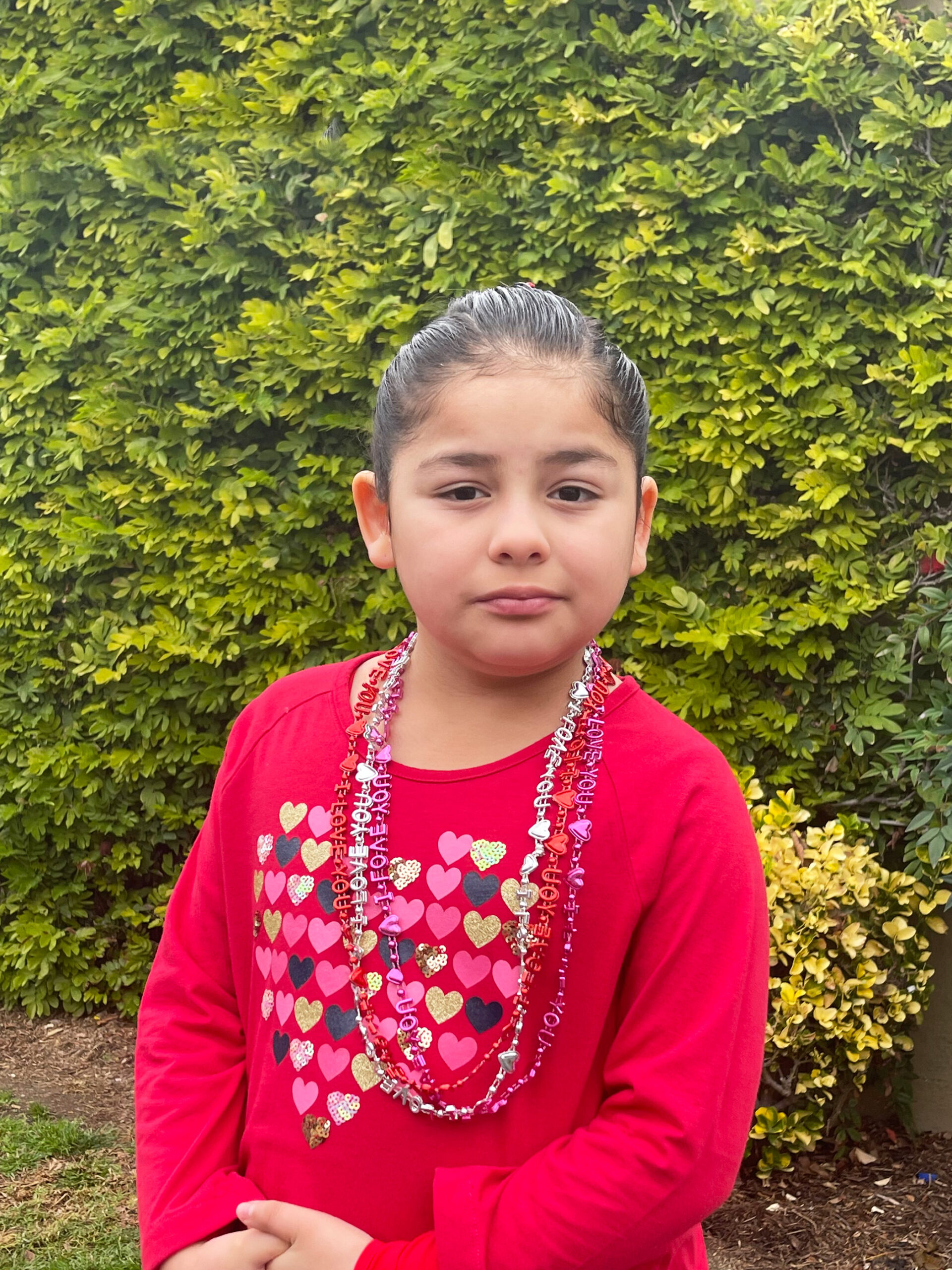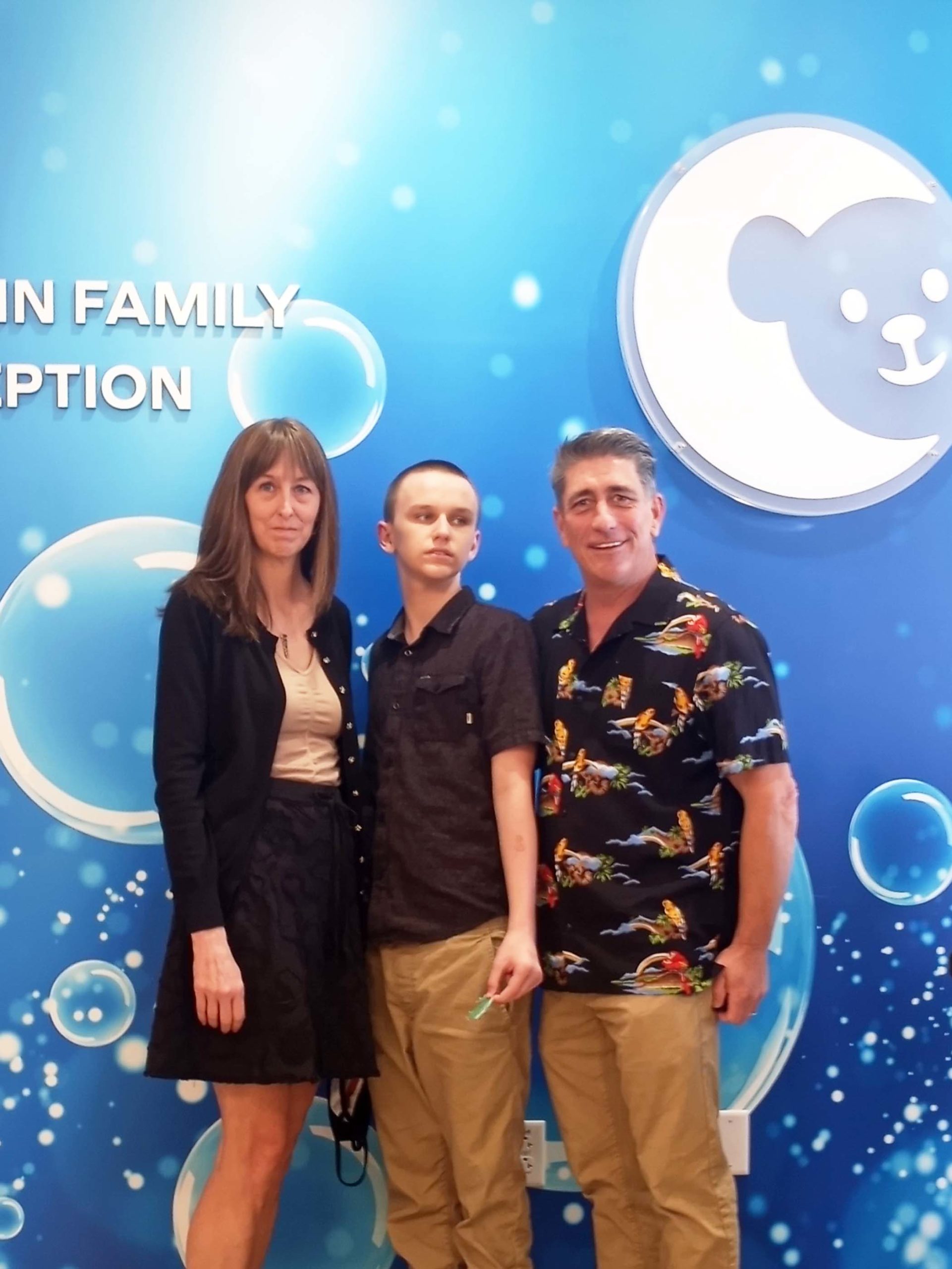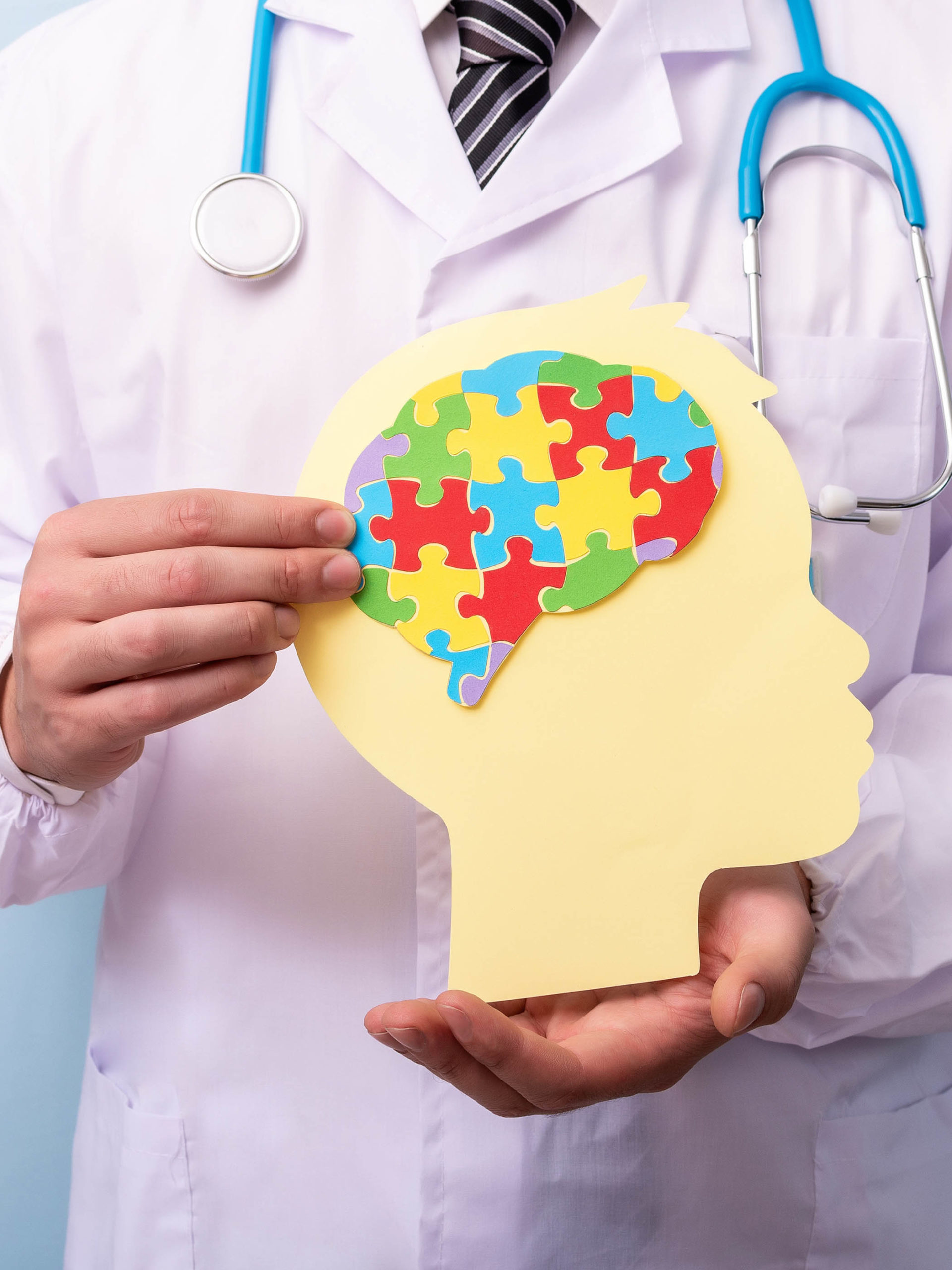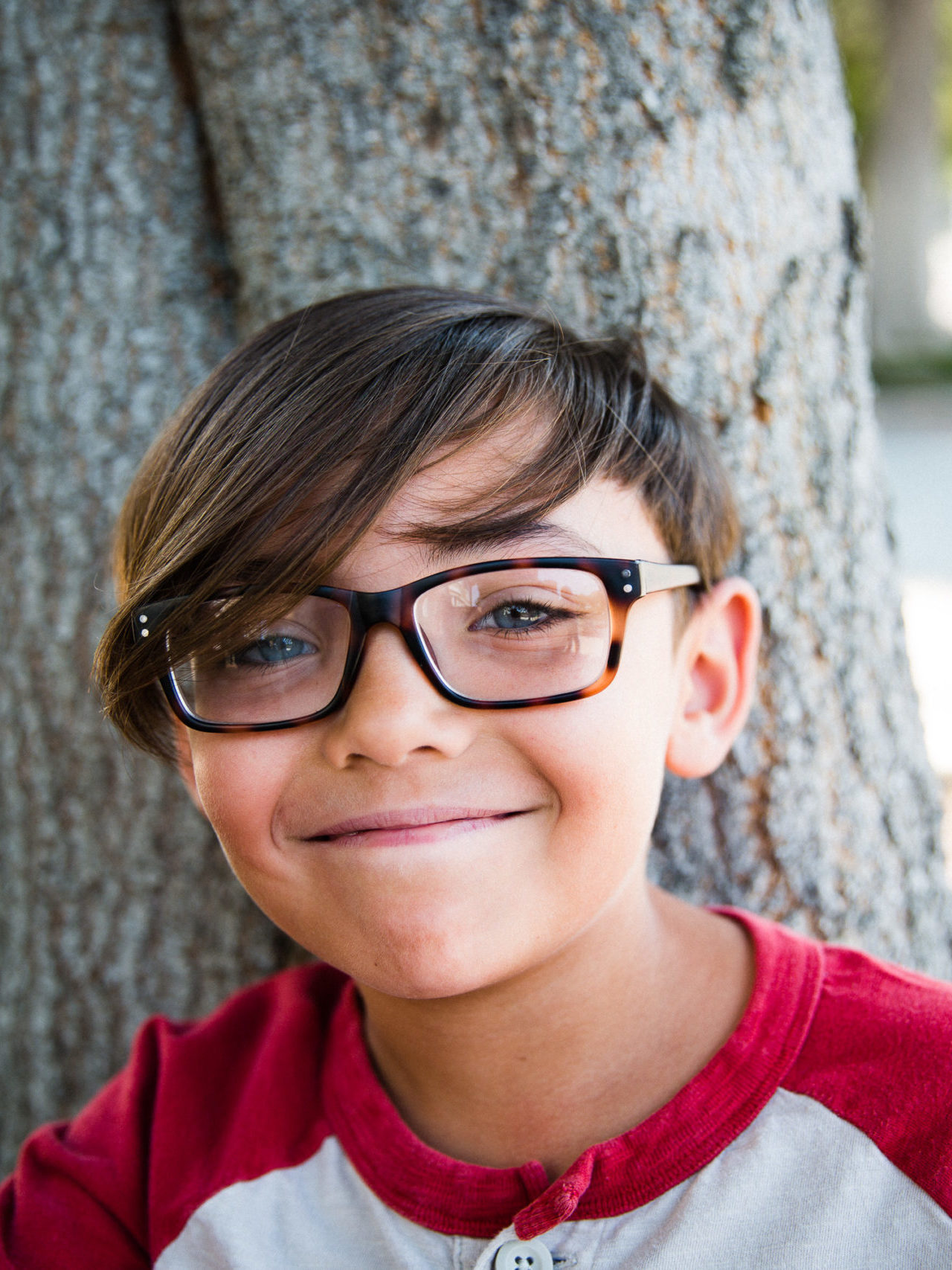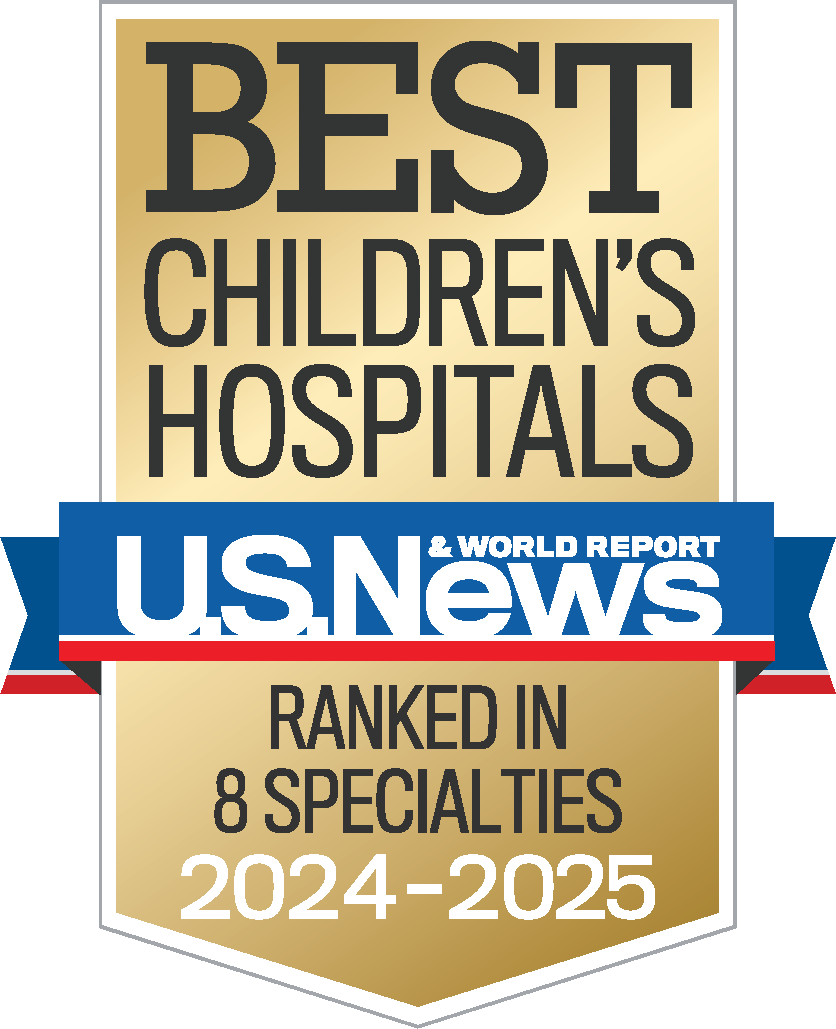GUIDE
Autism
Autism spectrum disorder (ASD) is a neurodevelopmental disorder characterized by deficits in social communication and interactions as well as restricted, repetitive behaviors. A child may show symptoms of ASD within the first three years of life, though symptoms could go unrecognized. It is common for a child diagnosed with ASD to have other conditions such as ADHD, sleep disorders, anxiety, depression, gastrointestinal issues, epilepsy or other similar issues.
External Resources
National Institute of Neurological Disorders
Autism Spectrum Disorder Fact Sheet
Autism Speaks
Parent’s Guide to Autism
Sibling’s Guide to Autism
Grandparent’s Guide to Autism
For more guides and handouts, visit the autism resources page on choc.org
Learn more about CHOC’s pediatric mental health services
At CHOC, we specialize in providing a full spectrum of pediatric mental healthcare, including inpatient, intensive outpatient and outpatient program services.
Get 24/7 advice from CHOC
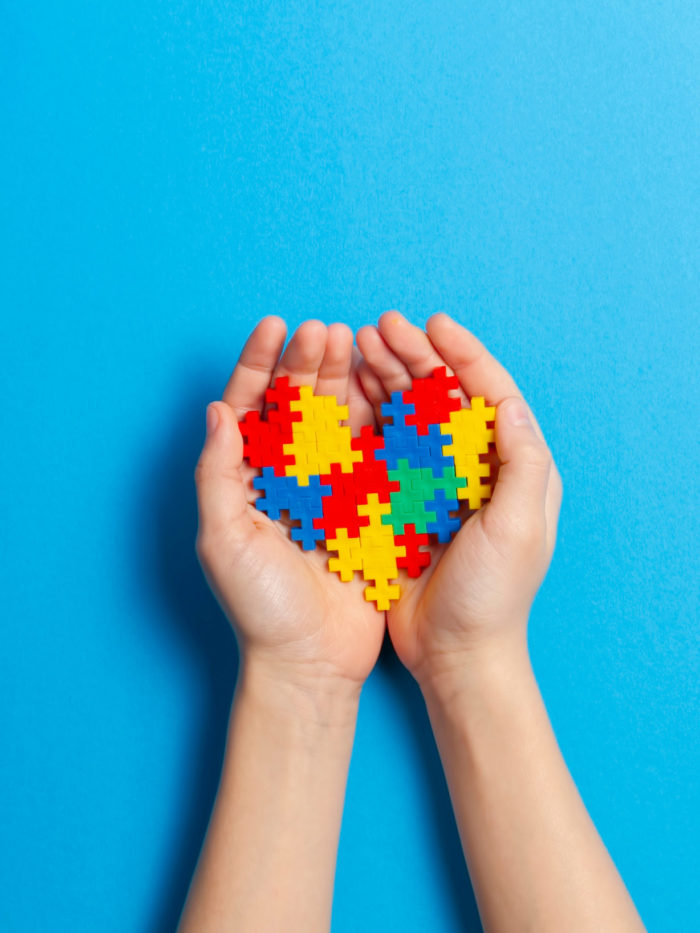
Can children outgrow autism?

Age-by-age healthy habits for children with autism spectrum disorder (ASD)
Frequently Asked Questions
According to the Centers for Disease Control and Prevention (CDC), about 1 in 44 children in the United States has ASD. ASD is reported to occur in all racial, ethnic and socioeconomic groups and currently is approximately four times more common among boys than girls.
What is autism spectrum disorder in children?
Autism spectrum disorder (ASD) is a problem that affects a child’s nervous system and growth and development. It often shows up during a child’s first 3 years of life.
Some children with ASD seem to live in their own world. They are not interested in other children and lack social awareness. A child with ASD focuses on following a routine that may include normal behaviors. A child with the disorder also often has problems communicating with others. He or she may not start speaking as soon as other children. He or she may not want to make eye contact with other people.
ASD can keep a child from developing social skills. This is in part because a child with ASD may not be able to understand facial expressions or emotions in other people. A child with ASD may:
- Not want to be touched
- Want to play alone
- Not want to change routines
A child with ASD may also repeat movements. This might be flapping his or her hands or rocking. He or she may also have abnormal attachments to objects. But a child with ASD may also do certain mental tasks very well. For example, the child may be able to count or measure better than other children. Children with ASD may do well in art or music, or be able to remember certain things very well.
What causes ASD in a child?
Experts don’t know what causes ASD. It may be caused by certain genes. A child with ASD may also have problems with their brain structure or with certain chemicals in the brain. Researchers do know that ASD is not caused by what a parent does to raise a child. It is also not linked to any vaccines given to children.
Much less often, other things that may cause ASD include:
- Being exposed to toxins in the environment before or after birth
- Severe infections such as meningitis or encephalitis that result in brain damage
- Problems during delivery
- Infections before birth
Which children are at risk for ASD?
ASD occurs in all racial, ethnic, and socioeconomic groups. The disorder happens much more often in boys than girls. Four to 5 times as many boys as girls have ASD.
Certain gene disorders that run in families can raise a child’s risk for ASD. These include:
- Fragile-X
- Phenylketonuria (PKU)
- Neurofibromatosis
- Tuberous sclerosis
- Chromosome problems
Your child may need genetic testing to help find out if another problem has contributed. The testing is done by a medical geneticist. This is a healthcare provider with special training in genetics and inherited problems. They can let you know the chances of having another child with the gene problem. For example, PKU carries a 1 in 4 chance of happening in another pregnancy. For tuberous sclerosis, the chances are 1 in 2.
Even when no gene problem is found, you are at a slightly higher chance of having another child with ASD. Experts think this is because several genes from both parents may act together to cause ASD.
What are the symptoms of ASD in a child?
Each child may have different symptoms. Below are the most common symptoms of ASD.
Parents of children showing the following symptoms should consider asking their pediatrician for an evaluation:
Social symptoms
- Has problems making eye contact with others
- Has problems making friends or interacting well with other children
Communication symptoms
- Does not communicate well with others
- Starts speaking at a later age than other children or doesn’t speak at all
- When the child is able to speak, doesn’t use speech in social settings
- Repeats words or phrases (echolalia) or repeats parts of dialogue from TV or movies
Behavior symptoms
- Does repeated movements, such as rocking or flapping fingers or hands
- May be too sensitive or less sensitive to certain things around him or her, such as lights, sounds, touch, or taste
- Has rituals
- Needs routines
The symptoms of ASD may look like other health conditions. Make sure your child sees their healthcare provider for a diagnosis.
Learn more about the Thompson Autism and Neurodevelopmental Center at CHOC
The Thompson Autism and Neurodevelopmental Center at CHOC is dedicated to bringing the latest treatments and resources to the autism community in Orange County.
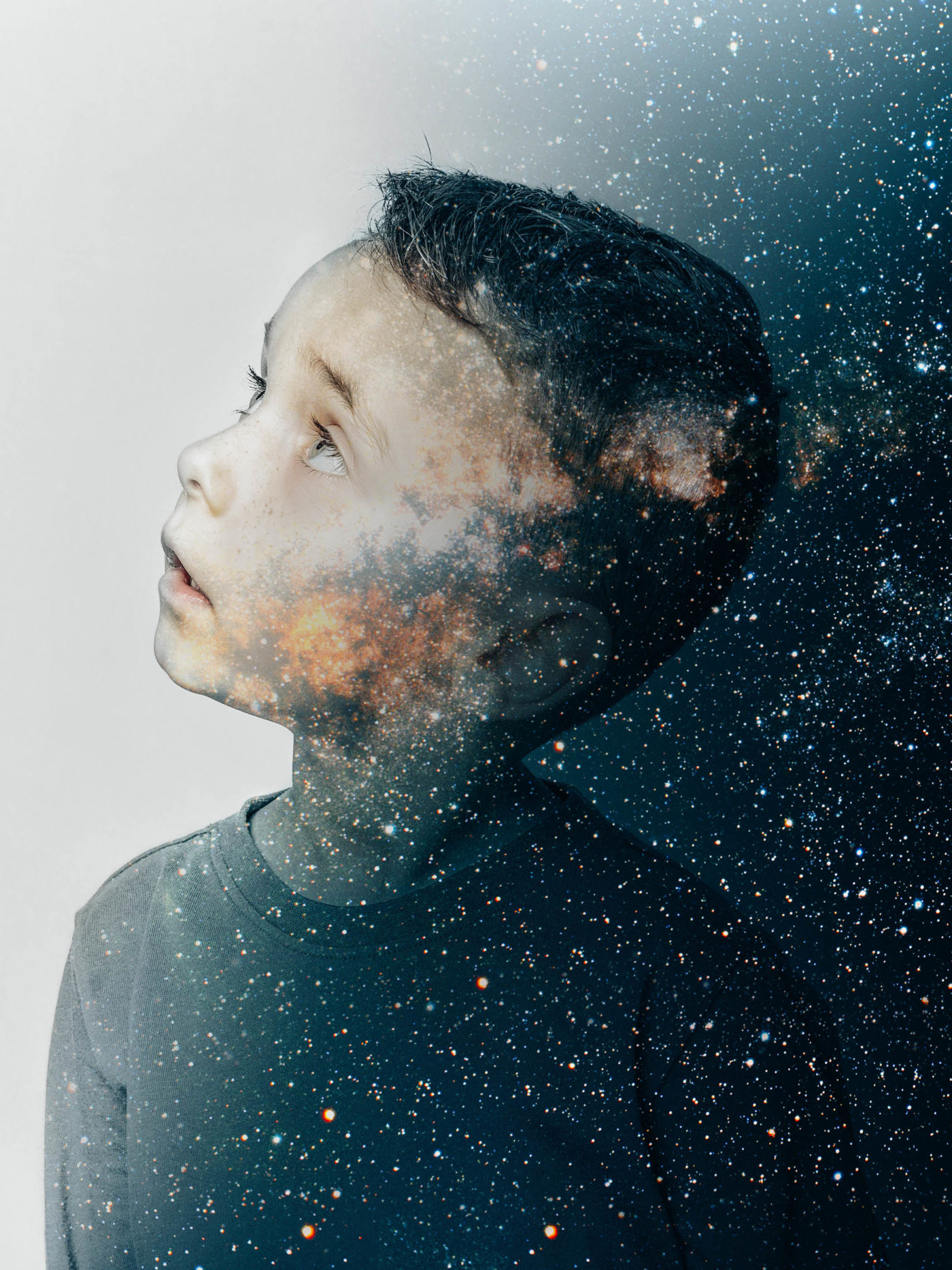
Autism Treatment
ASD is a lifelong condition that can put great stress on both the person with ASD and their family. Your child’s primary care provider will play a key role in supporting you and your child. They will help you understand treatment and how to care for your child.
How is ASD diagnosed in a child?
No single medical test can diagnose ASD. Healthcare providers use certain guidelines to help diagnose ASD in children before age 2. The guidelines can help diagnose the disorder early. Children diagnosed with ASD early can be treated right away.
The guidelines say that all children should be screened for ASD and other development disorders before age 2. The screening is done at well-child checkups. Children who have symptoms of development or behavior disorders will need to get more testing for ASD.
Healthcare providers look for the following problems during well-child visits before age 2:
- No babbling, pointing, or gesturing by age 12 months
- No single words spoken by age 16 months
- No 2-word phrases by age 24 months, just repeating words or sounds of others
- Loss of any language or social skills at any age
- No eye contact at 3 to 4 months
If a child has any of the above problems, the healthcare provider will do more screening. This will help show if your child has ASD or another developmental disorder. Your child may need to see a healthcare provider with special training to diagnose and treat ASD. Your child may also need these screening tests:
- Nervous system exam
- Imaging tests such as CT scan, MRI, or PET scan
- Mental health tests
- Genetic tests to look for gene problems that cause ASD or other developmental disorders
How is ASD treated in a child?
Each child with ASD needs their own special treatment program. This is because children with ASD can vary a lot in how much help they need. Programs that work best are those that are started as early as possible and include the parents.
Treatment for ASD includes:
- Behavior change programs. These programs teach social skills, movement skills, and thinking (cognitive) skills. They can help a child change problem behaviors.
- Special education programs. These focus on social skills, speech, language, self-care, and job skills.
- Medicine. Some children need medicine to help treat some of the symptoms of ASD.
Your child and your family may also need to see a mental health provider. This provider can give you parent counseling, social skills training, and one-on-one therapy. This provider can also help you find the treatment programs that are best for your child.

Interacting with a Child Who Has Autism Spectrum Disorder
Children with ASD have trouble relating to other people. They have trouble making eye contact. They often withdraw into themselves. They may seem uninterested in relating to family members. If you are a parent or grandparent of a child with ASD, it can be heartbreaking if you feel like you just can’t connect with them. But learning more about these disorders and what has helped others can help you and your relationship.
Breaking through the barriers of ASD
ASD has no cure. But there is hope through treatment. Many children can learn to communicate and interact. Healthcare providers and mental health experts have learned a lot about how to break through to these children.
Here are some things we know about children with an ASD:
- They may not be able to understand your nonverbal communications. They may not react to your smile or frown.
- They take things literally. You need to be careful to say exactly what you mean. If you hurry the child by saying “Step on it,” don’t be surprised if they ask what to step on.
- They may only be able to handle one thought or idea at a time. Keep conversations focused and simple.
- They may want to only talk about the one thing they are really interested in at a given time. And they may want to talk about it over and over again.
- They may see things differently than you do. You may not even notice ordinary sounds, tastes, touches, smells, and sights. But these may be physically painful to the child.
Communication and interaction tips for ASD
There are no hard-and-fast rules on how to communicate with a child with ASD. But many family members have had success with these tips:
- Be patient. It often takes a child with ASD longer to process information. You may need to slow down your conversation to their speed. Long pauses can be helpful.
- Teach the child how to express anger without being too aggressive. Children with ASD should know that they don’t have to hold their anger and frustration inside.
- Be persistent but resilient. Don’t let your feelings get hurt if the child does not respond to you as you’d like. Children with ASD may have trouble both showing and controlling their emotions. They can be blunt in their responses. Don’t take this personally.
- Always stay positive. Children with ASD respond best to positive reinforcement. Be sure to talk about or reward good behavior often. Be generous with compliments for good behavior.
- Ignore irritating attention-getting behavior. A child with ASD may act badly at times to get you to focus on them. Ignoring this behavior is often the best way to prevent it. Also talk about and reward the child’s good behavior often.
- Interact through physical activity. Children with ASD tend to have short attention spans. This is especially true when it comes to communicating. Running around and playing outside may be a better way of sharing time together. It will also let them relax and feel calmer.
- Be affectionate and respectful. Children with ASD often need a hug, just like other children. Sometimes they need this much more than other children. But some children don’t like to be touched at all, even light contact can distress them. Respect their personal space. Never force physical affection on an unwilling child.
- Show your love and interest. Children with ASD may have trouble showing their feelings. But they still need to know that you love them. Go out of your way to express your interest, caring, and support.
- Learn from your child. Your child’s special need and abilities may show you a way to look at the world that you’ve never considered. As difficult as it may be on some days, relaxing, laughing, and enjoying the unique gift that is your child can provide both you and your family with many rewards.
- Believe. A child with autism is first and foremost a child. Theyare a growing person with unknown possibilities. Believe in what the child can do. Don’t define the child by a diagnosis.
- Take care of yourself. It’s OK to take a break. Join parent support groups. Or ask understanding family and friends to care for your child so you can recharge. School psychologists and counselors can also provide resources to help you.
It can be challenging to interact with a child or grandchild with ASD. But it’s one of the most important things you can do to help that child learn. Research shows that early, frequent, and loving involvement of family members is one of the best ways to help children with ASD.
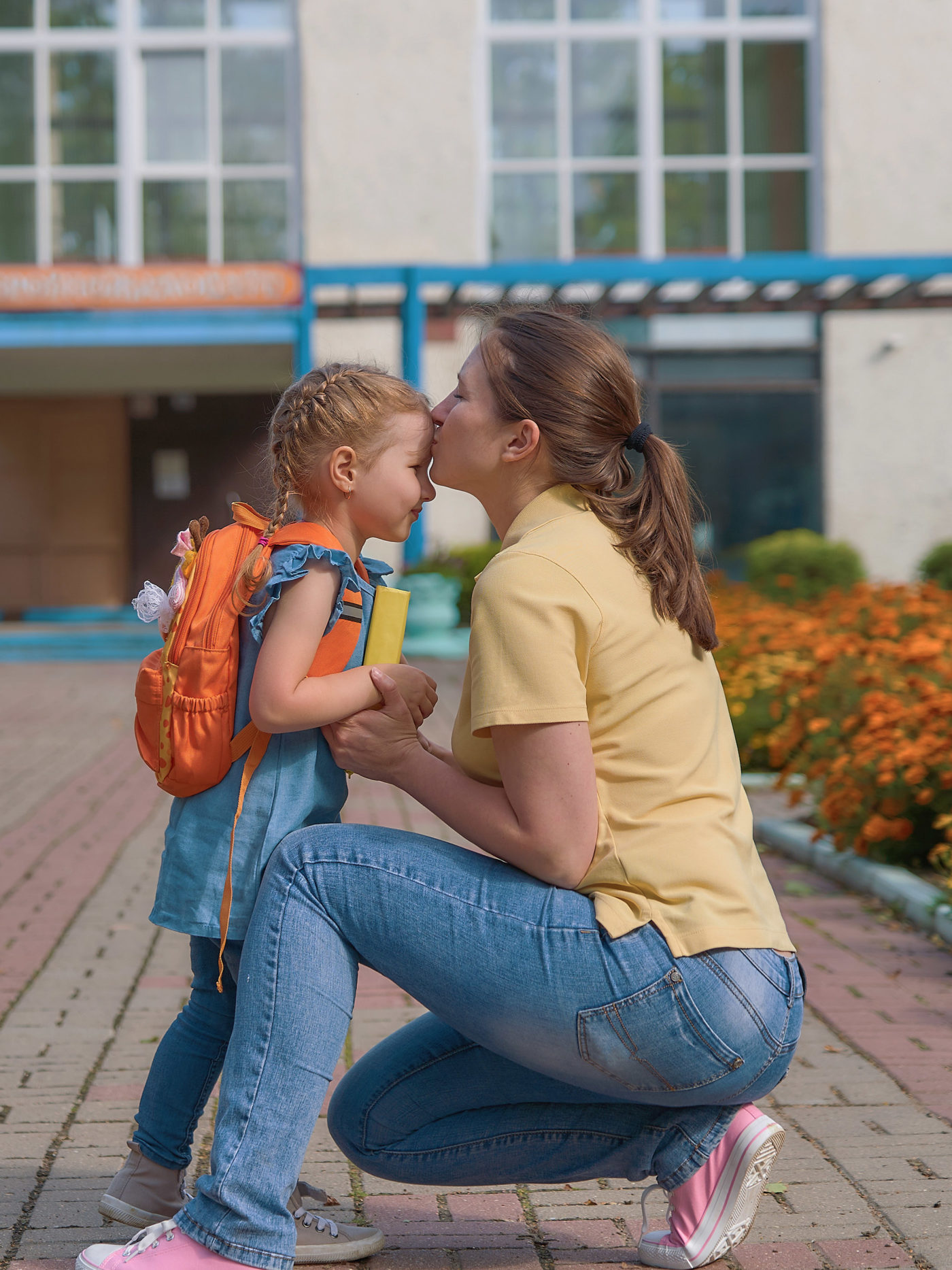
Life with Autism Spectrum Disorder
Experts don’t know how to prevent ASD in children. They do know that it is not caused by what a parent does to raise a child, nor is it linked to childhood vaccines. Spotting and treating ASD early can reduce symptoms and enhance your child’s normal development. It can also improve your child’s quality of life.
How to help your child with ASD
- Keep all appointments with your child’s healthcare provider.
- Talk with your child’s healthcare provider about other providers who will be included in your child’s care. Your child may get care from a team that may include neurologists, speech-language pathologists, occupational and physical therapists, social workers, psychologists, and psychiatrists. Your child’s care team will depend on your child’s needs and how serious the ASD is.
- Tell others about your child’s ASD. Work with your child’s healthcare provider and schools to create a treatment plan.
- Check for school resources for your child. Many times a child’s ASD seriously interferes with their ability to manage regular school settings. The Americans with Disabilities Act (ADA) and Section 504 of the Civil Rights Act can help protect children with special educational needs. Talk with your child’s teacher or school principal for more information.
- Have your child wear a medical alert bracelet or necklace if they wander or have communication problems,. Also think about having them carry an emergency form with contact information and communication symbols.
- Reach out for support from local community services. ASD can be stressful. Being in touch with other parents who have a child with ASD may be helpful.
- Take care of yourself and watch for signs of stress in you or your family members. The physical and emotional demands of caregiving can be overwhelming. Let family and friends help and provide respite care. A break can be helpful for both you and your child. Get additional professional support if needed.

Safety tips to help prevent wandering and associated dangers
Nearly half of all children with ASD struggle with elopement, or wandering away from a safe environment, at some point during their lives. Of those, roughly a third are non-verbal. We also know that individuals with ASD are often drawn to roadways, trains and water. Accidental drowning is a leading cause of death for kids with ASD, accounting for 90 percent of deaths reported in children with ASD age 14 and younger who went missing. Here are some tips to help prevent elopement.
Secure your home
- Make sure you secure entries and exits to your home in a way that an individual with ASD cannot easily leave on their own. Motion detection systems are also an option so family members are alerted if someone is leaving a safe space.
- Place STOP signs at exits and doorways. Have your child practice stopping and waiting to hear “go.”
Consider tracking devices
- Consider purchasing and utilizing a GPS device for an individual with ASD who may be at a higher risk for wandering. Many devices can be synced with your phone or tablets so that you can easily locate an individual and are alerted if they leave an expected location.
Consider ID bracelets
- Have your child wear an ID bracelet. If an individual wanders from a safe space, it is helpful to have some basic identifying information so that people know who to contact.
- Label or write your name and phone numbers into your child’s clothing.
Teach your child to swim
- Enroll your child in swimming lessons. We know that many individuals on the spectrum are drawn to water and it is critical that they are able to swim. Some swimming lessons or aquatics programs may even specialize in teaching kids with ASD.
- Sit down with your child and explain when and where they can and cannot swim.
Alert your neighbors
- Inform close and familiar neighbors regarding your child’s safety concerns and offer your contact information. They can help be on the lookout for your child if they were to wander off.
Alert first responders
- Offer your address and your child’s needs, especially regarding wandering, to the local police department. Police departments will want to know places your child may like to frequent, their interests and any other unique communication concerns your child may have. Your local police department or fire department may have additional resources and tips that you can use to help support your child with ASD.
Sign up for CHOC’s Autism Newsletter
Sign up to receive the latest information about autism care and resources from the pediatric experts at CHOC’s Autism Center. View previous newsletters.
Autism recommended reading
Recommended Books
- Different Like Me: My Book of Autism Heroes, Jennifer Elder and Marc Thomas
- The Girls’ Guide to Growing Up: Choices & Changes in the Tween Years, Terri Couwenhoven
- The Boys’ Guide to Growing Up: Choices and Changes During Puberty, Terri Couwenhoven
- Sexuality and Relationship Education for Children and Adolescents with Autism Spectrum Disorders, Davida Hartman
- The Everyday Parenting Toolkit, Alan E. Kazdin and Carlo Rotella
- What About Me?: A Book By and For An Autism Sibling, Brennan Farmer, Mandy Farmer and Emily Neff
Books on Autism for Siblings
- Andy and His Yellow Frisbee, Mary Thompson
- All About My Brother, by Sarah Peralta
- Everybody is Different, Fiona Bleach
- Since We’re Friends: Autism Picture Book, Celeste Shally
Additional Resources
The guidance on this page has been clinically reviewed by CHOC pediatric experts.
For more health and wellness resources from the pediatric experts at CHOC:
Sign up for the Kids Health newsletter.
The contents of this webpage, including text, graphics, audio files, and videos (“Materials”), are for your general information only. The Materials are not intended to substitute qualified professional or medical advice, diagnoses, or treatments. CHOC does not recommend or endorse any specific tests, physicians, products, procedures, or other information that may be mentioned on or linked to this webpage. Always call your physician or another qualified health provider if you have any questions or problems. If you think you may have a medical emergency, call your doctor, go to the nearest emergency department, or call 911.
For more health information for your family visit health.choc.org






